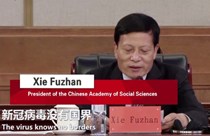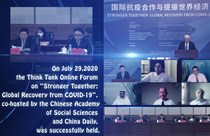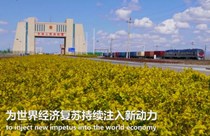Higher education in China needs to serve economy
Author : Source : CSST 2013-12-04
The competitiveness in higher education is both a main part and the base of the national competitiveness. Our study found that the competitiveness of Chinese higher education ranks 33rd among the 53 selected countries, which takes the middle position of the world. Based on our index of competitiveness of higher education, our finding is that China possesses some advantages in terms of the overall scale and the total amount, however, the ratio by person significantly lags behind.
The number of students in China’s higher education has been dramatically expanded from 120,000 in 1949 to 29.07 million in 2008.; the number of higher education institutions has been increased from 598 in 1978 to 1022 in 1998, according to the data provided by the Ministry of Education. The number was even rapidly boomed since China adopted the expanding enrollment policy in 1999. In 2005, China ranked first in the world in the total number of students enrolled in higher education institutions. Although China ranks first among the selected 53 countries in term of the total number of enrolled students in higher education, the number of college students in per thousand persons only ranks 47th in the 53 countries. In addition, its gross enrollment ratio in higher education is also below the average ratio of 54.5% of the 53 countries, only ranks the 43rd.
Higher education takes major role in human resources training. China now has the absolute advantage in the stock of educated workforce. In 2005, China had the largest stock of human resources in science and technology in the world, the total number was reached 42 million; the size of R&D staff was the second in the world, about 1.9 million per year.
Higher education’s contribution to knowledge innovation is evaluated by the absolute value and the relative value of the number of published scientific papers and patents. In 2006, China had 41,596 scientific papers published ranking the world’s fifth; with 16,807 patents obtained, only after Japan, the United States, South Korea and Russia.
The relative value, however, is still in a relative weak position. In the number of published scientific papers in per thousand persons, the United States is 22 times of that of China. The United kingdom, Japan, South Korea are 24, 14, and 11 times of that of China respectively. Other countries such as Russia and Brazil are also ahead of China in terms of published scientific papers in per thousand persons. In the number of patents, China falls down to 32th in per thousand persons.
Higer education is a key driving force for economic development. However, China doesn’t show promising demonstration in this regard. China ranks only 49th and 48th in the indexs of “collaboration between higher education institutions and enterprises” and “whether higher education meets the development of competitive economy” respectively. There is an even a wider gap between China and other countries in how much higher education could adapt to the economy. An enormous challenge is posed to higher education in China is how to serve the economy and society better.
Translated by Jiang Hong
Editor: Du Mei
Ye Shengtao made Chinese fairy tales from a wilderness
Ye Shengtao (1894–1988) created the first collection of fairy tales in the history of Chinese children’s literature...
-
How northern ethnicities integrated into Chinese nation
2023-09-18
-
Mogao caves
2023-09-12
-
Mogao Grottoes as ‘a place of pilgrimage’
2023-09-12
-
Time-honored architectural traditions in China
2023-08-29
-
Disentangling the civilizational evolution of China
2023-08-28
-
AI ethics in science fiction
2023-08-23














 2011-2013 by www.cssn.cn. All Rights Reserved
2011-2013 by www.cssn.cn. All Rights Reserved